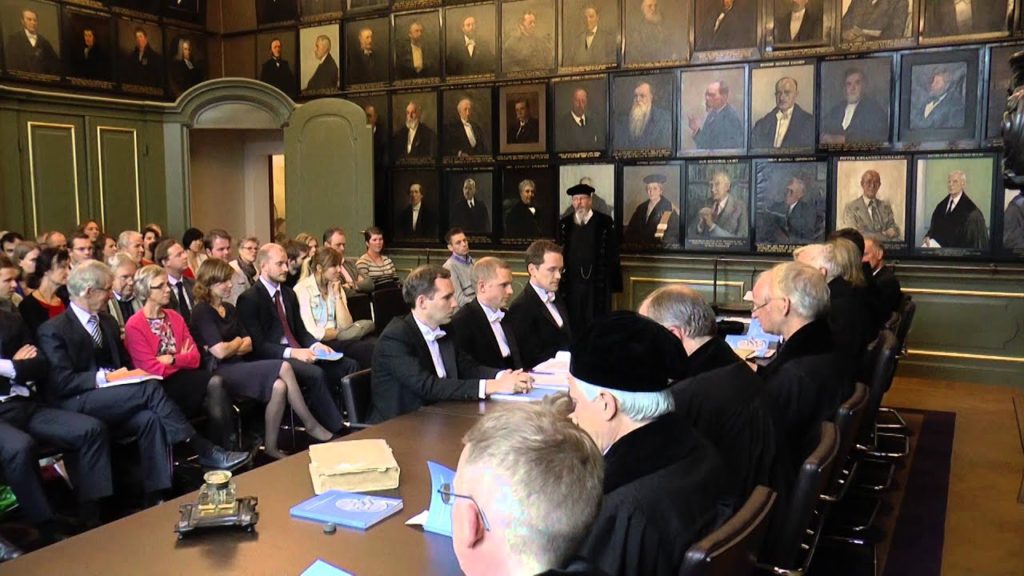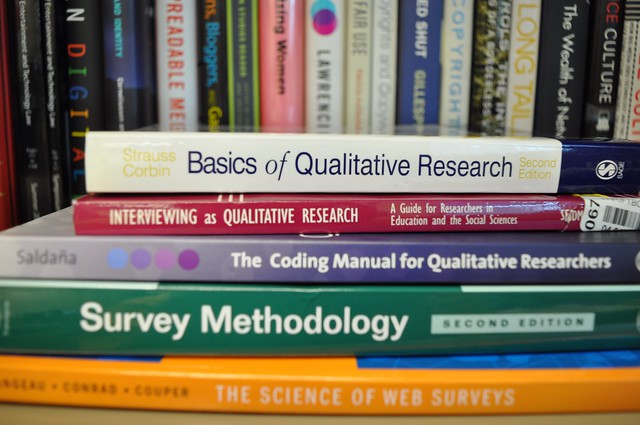The dissertation proposal and defense represent key milestones in the journey to the degree (Bowen, 2005). Each section of the proposal meets goals critical not just to a successful proposal defense but to the success of the entire dissertation research endeavor. When you and your faculty advisor agree that the dissertation proposal is complete, you will schedule a proposal defense. Ideally, your academic program will inform you in advance of the expected timeline. Within this timeline, you will then work with your advisor and committee members to determine a day and time for the defense. Institutional norms and policies likely require that the finished proposal be provided to the committee a specific number of days or weeks in advance of the defense. Typically, you should expect to provide at least two weeks lead time prior to the proposal defense (Butin, 2010). In today’s post, I will share some details on what to expect and how to prepare for defending your dissertation proposal.

Photo credit: Marco Verch
The proposal defense serves two functions. First, the defense allows you to demonstrate your knowledge of the topic and the research process. Second, the defense ensures that you move forward with the dissertation in the strongest possible position. Your chair and committee should make sure you are prepared to complete the study, and that the study is feasible in terms of research design and timeline (Lei, 2009). In effect, a successful proposal defense (and the resulting faculty signatures of approval) constitutes an agreement between the student, the chair, and the committee. For the committee, the agreement codifies that you have done the proper due diligence and can produce a quality dissertation; for you, the approval provides the security of knowing that the committee supports the intended research design and direction.
After setting the defense date and providing a copy of the proposal to the committee, you should prepare for the defense. In most cases, you should not make edits or changes to the proposal after sending it to the committee, even if you notice typographical errors or other small issues. The committee takes care and time to read and prepare questions based on the document they receive; making changes after the document is sent defeats this purpose. While you should not change the document itself, you do need spend time preparing your oral remarks for the proposal defense. Of course, the expectations for this element of the dissertation process vary according to institution and/or dissertation chair preferences; nevertheless, all students can expect to engage in at least a short oral presentation of the proposed study. The committee will have read your proposal at this point, so prepare a talk that summarizes just the main ideas of your dissertation. Let’s say you are asked to present for no more than 15-30 minutes (this practice is a common one). You may want to divide this time into thirds and spend 5-10 minutes on each chapter of your proposal. Additionally, check with your chair to determine if technology is available in the room, if you are expected to use technology, or if handouts or other written materials are expected or preferred.
In addition to preparing for the proposal defense, you may also spend the time between the proposal submission and defense by preparing documents for eventual submission for human subjects research review. Often called the Institutional Review Board or IRB, this department on campus oversees human subject research. Approval from this university office, in addition to the dissertation committee, must be received before moving to data collection. These documents should not be submitted prior to the proposal defense, since changes to the research design commonly occur at the proposal defense and would need to be incorporated into the final human subjects review proposal submission.
You should enter a proposal defense with the expectation of edits. A student rarely if ever leaves a defense without edits. The amount and extent of edits may vary, but feedback that clarifies and strengthens the dissertation serves as the primary outcome of a proposal defense. Edits do not necessarily mean that the original dissertation design was weak; rather, you should think of the defense and feedback from the committee as a collaborative process resulting in an even stronger study (Lei, 2009). After you present an oral summary of the proposal at the defense, committee members often take turns asking questions, sometimes in round-robin style, but other times in conversation with you and each other. You may be asked why you made specific choices as opposed to alternative options in the research design or to explain the logic that led to a specific design feature. The conversation can last for over an hour depending on the topic and the committee members. When the defense reaches a stopping point, you may be asked to leave the room for the committee to deliberate about next steps.
While what happens inside the room once you leave may seem mysterious, it is actually straightforward. The committee primarily discusses what edits, and in what form, they will require you to complete. Once everyone is satisfied, you will be called back into the room and informed of next steps. Three possible outcomes exist from a proposal defense.
- Pass without edits. The committee approves your dissertation proposal with no additional changes requested. Note: This is quite rare.
- Pass with edits. The committee approves your dissertation proposal pending edits. The requested revisions may be small or major, but do not require you to re-defend your dissertation proposal.
- The committee does not approve you moving forward, which means major changes or even a complete overhaul of your entire proposal is necessary. Unless you have pushed for a defense without your chair’s approval or failed to do what was requested during the proposal writing process, this outcome should not happen.
When edits are required, they will be shared with you after the proposal defense or perhaps in a subsequent meeting with the chair, depending on your chair’s preferences. Your committee may have raised a number of potential revisions during the proposal defense, but not all of these will be required. Working with your chair, you will create a to-do list of all issues to be addressed in response to the critiques and suggestions of the committee. Timelines can vary, but two actions generally must be taken at this point: 1) The submission of your human subjects review materials and 2) edits to the proposal. While IRB documents are usually submitted before students turn back to the proposal to make the needed edits, the order of these actions may vary between institutions.
A useful way to tackle the committee’s edits is to take the notes from the proposal defense and place them in one column of a two-column table. In the other column, outline the specific edit you made in response to the committee’s suggestion—you should undertake this tracking process while making edits to the proposal. Make sure to include the edits as well as their respective page numbers in your proposal. This format helps keep you accountable to all the committee’s requested changes and facilitates a later review by the chair and/or committee. You can include the list of revisions when submitting the revised proposal to the chair and, if requested, the committee.
Some committee members may want to see the revised proposal, while others are comfortable delegating that responsibility to the dissertation chair. Confirm with the committee and chair about their preference for overseeing this process at the proposal defense. In addition, you should know if and when the committee members are willing to sign the institutional documents accompanying a successful proposal defense. Ask your advisor, program administrator, or other faculty which documents are necessary for the defense and if you need to bring those with you. These documents signify that you have officially advanced to doctoral candidacy, a key step of the doctoral process.






